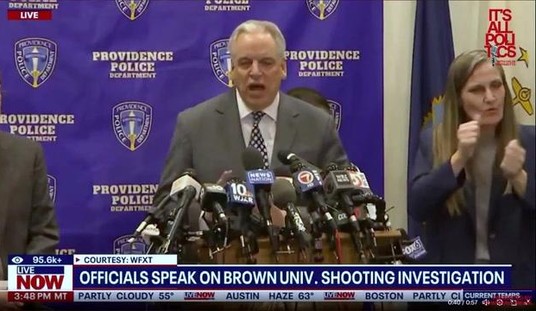The U.S. House of Representatives, on a bipartisan basis, approved Tuesday the Cut, Cap and Balance Act that provides for an increase in the U.S. federal debt limit — but only on the condition that next year’s deficit is substantially reduced, that real and enforceable spending caps are adopted, and that the Congress approve and send to the states for ratification a balanced budget amendment to the U.S. Constitution.
The vote was 234 to 190, a remarkable outcome for an idea that many observers did not think had a chance of even coming to the floor just one month ago.
Democrats voting for the measure were Dan Boren of Oklahoma, Jim Cooper of Tennessee, Jim Matheson of Utah, and North Carolina’s Mike McIntyre and Heath Shuler, all of whom — save Boren, who is not running fro reelection — are likely to be in much more Republican leaning districts after the 2010 redistricting is completed.
The GOP also had a handful of members voting “No,” presumably because they are opposed to raising the debt limit under any circumstances: Minnesota’s Michele Bachmann, Paul Broun of Georgia, Texas’ Ron Paul and Francisco Canseco, Tennessee’s Scott DesJarlais, Florida’s Connie Mack, Walter Jones of North Carolina, Virginia’s Morgan Griffith, and California’s Dana Rohrabacher.
The impact of Cut, Cap and Balance cannot be underestimated. Its progress through the House has forced serious consideration in the Senate of several measures that will also allow for an increase in the debt ceiling, none of which, however, are being embraced by conservatives whose primary concern is spending.
Speaking from the White House hours before the vote, President Barack Obama dismissed the measure as partisan gamesmanship while nonetheless acknowledging it was, for the GOP, politically necessary.
The problem, as Obama sees it, is that the Republicans in the House have taken the position — one that the vote on Cut, Cap and Balance reinforces — that the reason the U.S. is approaching the debt limit is that spending is out of control and needs to be cut. The president, by comparison, would prefer to address the issue with some grand design that is a combination of spending cuts, new revenues, and, unbelievably enough, new spending.
The problem with that approach, as the nation has seen time and again since Ronald Reagan was president, is that the tax hikes and new revenues go into effect immediately, putting a drag on the economy, as does the new spending. The cuts, which are always scheduled to go into effect in the so-called “out years,” never seem to materialize.
Obama said Tuesday he would prefer to operate along the lines of what a bipartisan group of senators want to do, what he called “a proposal that is broadly consistent with the approach I have urged,” one where there is “shared sacrifice and everybody is giving up something.”
The problem with that approach, say several analysis that have studied its framework, is that it won’t address the problem that has created the current crisis.
Anti-tax activist Grover Norquist was particularly blunt in his criticisms of the new proposal.
“The ‘Gang of Six plan’ is not written in legislative language,” Norquist said in a statement. “It is an outline. It punts many decisions to the Senate Finance Committee. It deals in ranges rather than specifics. When it is eventually written down in legislative language and every American can read it, taxpayers will then learn whether the ‘plan’ raises taxes or cuts taxes and seriously reduces spending or fails to mandate spending reductions.”
“It is a mistake,” Norquist continued, “to invest one’s hopes or fears while the ‘plan’ remains unclear and subject to change by a Senate Finance Committee selected by Democratic leader Senator Harry Reid.”
Norquist was not alone in attacking the new plan. The Cato Institute’s Dan Mitchell, one of the sharpest economists in Washington, conceded that while there were some things in the new plan that were good, comparatively speaking the “Good,” the “Bad” and the “Ugly” far outweigh anything even remotely desirable about the so-called “Gang of Six” plan.
In the “Bad” category, Mitchell identified a number of issues, including that “the much-heralded spending caps do not apply to entitlement programs,” which he described as “going to the doctor because you have cancer and getting treated for a sprained wrist.”
Mitchell also identified the lack of real reform of Medicare and Medicaid as well as “a net tax increase of more than $1 trillion,” which he admitted he expected to go higher as the specific details of the plan become public. He noted that it “targets some provisions of the tax code — such as IRAs and 401(k)s — that are not preferences, but instead exist to mitigate against the double taxation of saving and investment.”
In the “Ugly” category is the fact that the “Gang of Six” plan is “based on dishonest Washington budget math.”
“Spending increases under the plan,” Mitchell wrote on his blog, “but the politicians claim to be cutting spending because the budget didn’t grow even faster.”
He also identified what he called “a back-door scheme to change the consumer price index in such a way as to reduce expenditures (i.e., smaller cost-of-living-adjustments) and increase tax revenue (i.e., smaller adjustments in tax brackets and personal exemptions). The current CPI may be flawed, but it would be far better to give the Bureau of Labor Statistics further authority, if necessary, to make changes.”
There is also the plan put forward by Senate Republican Leader Mitch McConnell, which has been embraced by Senate Majority Leader Harry Reid and House Democratic Leader Nancy Pelosi. This plan would give the president the debt limit increase he seeks — subject to congressional resolutions of disapproval — but would lay the political blame for the consequences squarely at Obama’s feet.
That approach, which has been called “Plan B,” is also under assault from conservatives in the House who object to giving the president everything he wants — an increase in the debt limit — without winning anything in return.
There’s more — but the plans seem to be non-starters in the same House that just passed the Cut, Cap and Balance Act. Only time will tell.
Also read: House Republican and Democrat Want Vote on the ‘Gang’ Plan, at the Tatler.









Join the conversation as a VIP Member